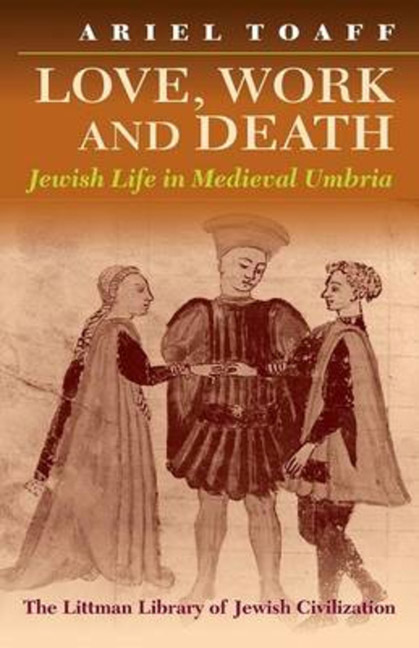Book contents
- Frontmatter
- Contents
- List of Figures
- List of Tables
- Abbreviations
- Note on Currency, Weights, and Measures
- Map showing Jewish settlements in Umbria
- Introduction
- 1 Sex, Love, and Marriage
- 2 Love of Life and Intimations of Mortality
- 3 Meat and Wine
- 4 The House of Prayer
- 5 Outcasts from Society
- 6 Witchcraft, Black Magic, and Ritual Murder
- 7 Converts and Apostates
- 8 The Pattern of Discrimination
- 9 Merchants and Craftsmen
- 10 Doctors and Surgeons
- 11 Banks and Bankers
- Bibliography
- Index
3 - Meat and Wine
- Frontmatter
- Contents
- List of Figures
- List of Tables
- Abbreviations
- Note on Currency, Weights, and Measures
- Map showing Jewish settlements in Umbria
- Introduction
- 1 Sex, Love, and Marriage
- 2 Love of Life and Intimations of Mortality
- 3 Meat and Wine
- 4 The House of Prayer
- 5 Outcasts from Society
- 6 Witchcraft, Black Magic, and Ritual Murder
- 7 Converts and Apostates
- 8 The Pattern of Discrimination
- 9 Merchants and Craftsmen
- 10 Doctors and Surgeons
- 11 Banks and Bankers
- Bibliography
- Index
Summary
THE NEED FOR MEAT
JEWS faced particular problems in what Fernand Braudel calls ‘carnivorous Europe', where meat was eaten every day, servings were generous, and wine was drunk as though it were water. For Jews, consumption of meat and wine was conditional upon their preparation according to strict rules. Meat in particular, excluding pork and horsemeat because of the well-known biblical taboos, could be eaten only when the animals had been slaughtered using a special technique, known in Hebrew as sheḥitah, which requires the trachea and oesophagus to be slashed with a very sharp knife so as to drain off all the blood. No animal could be eaten if it had been found to be unhealthy or in any way abnormal upon careful inspection after slaughter (bedikah). Even in those animals declared to be fit for consumption after ritual slaughter and inspection, there were many parts (blood, fat, and sinews) which still could not be eaten, particularly those from the hindquarters. Adherence to Jewish dietary law thus entailed waste: on the one hand, of animals which had been slaughtered and then found to be unfit, and on the other, of remains which could not in any circumstances be eaten by Jews. Thus a Jewish community needed a far greater supply of animals than a Christian one, irrespective of the appetites or financial means of individuals. The cost of a pound of kosher meat would have been prohibitive if the relevant butcher had not been able to sell the rejected parts to Christian customers. In summary, then, the presence of a Jewish community in any town was always dependent on the regular availability of kosher meat. Jews required local authorities to allow unrestricted ritual slaughter of animals; they also needed permission for town butchers to sell the residue and rejects to their Christian clients. This second condition protected Jews from the danger that the price of kosher meat might be higher than the general level fixed by the victualling laws.
Almost all the charters granted by Italian municipal authorities to Jews in the late Middle Ages contain clauses ensuring them a regular supply of kosher meat.
- Type
- Chapter
- Information
- Love, Work, and DeathJewish Life in Medieval Umbria, pp. 61 - 83Publisher: Liverpool University PressPrint publication year: 1996

